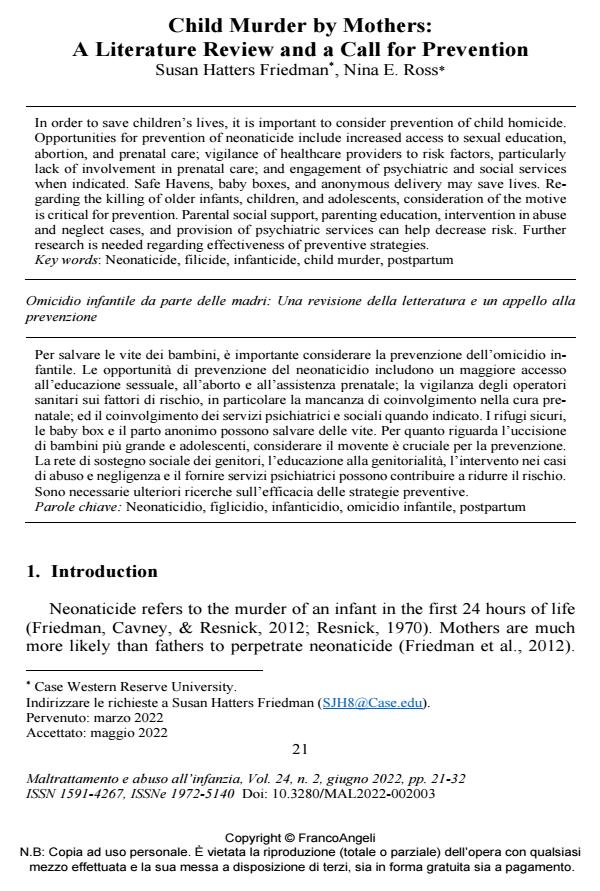Child Murder by Mothers: A Literature Review and a Call for Prevention
Journal title MALTRATTAMENTO E ABUSO ALL’INFANZIA
Author/s Susan Hatters Friedman, Nina E. Ross
Publishing Year 2022 Issue 2022/2
Language English Pages 12 P. 21-32 File size 216 KB
DOI 10.3280/MAL2022-002003
DOI is like a bar code for intellectual property: to have more infomation
click here
Below, you can see the article first page
If you want to buy this article in PDF format, you can do it, following the instructions to buy download credits

FrancoAngeli is member of Publishers International Linking Association, Inc (PILA), a not-for-profit association which run the CrossRef service enabling links to and from online scholarly content.
In order to save children’s lives, it is important to consider prevention of child homicide. Opportunities for prevention of neonaticide include increased access to sexual education, abortion, and prenatal care; vigilance of healthcare providers to risk factors, particularly lack of involvement in prenatal care; and engagement of psychiatric and social services when indicated. Safe Havens, baby boxes, and anonymous delivery may save lives. Regarding the killing of older infants, children, and adolescents, consideration of the motive is critical for prevention. Parental social support, parenting education, intervention in abuse and neglect cases, and provision of psychiatric services can help decrease risk. Further research is needed regarding effectiveness of preventive strategies.
Keywords: Neonaticide, filicide, infanticide, child murder, postpartum
Susan Hatters Friedman, Nina E. Ross, Child Murder by Mothers: A Literature Review and a Call for Prevention in "MALTRATTAMENTO E ABUSO ALL’INFANZIA" 2/2022, pp 21-32, DOI: 10.3280/MAL2022-002003